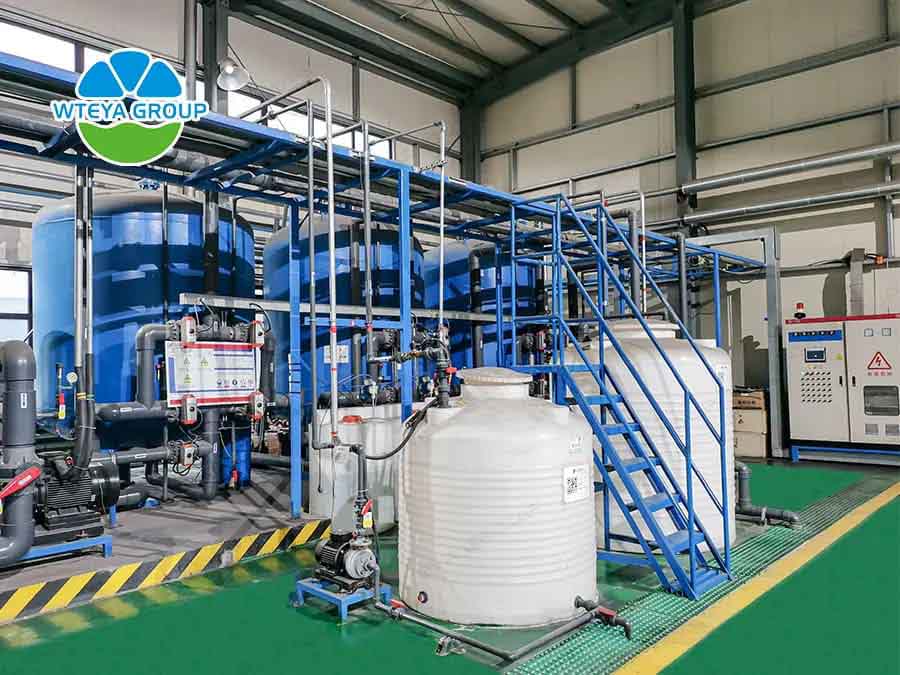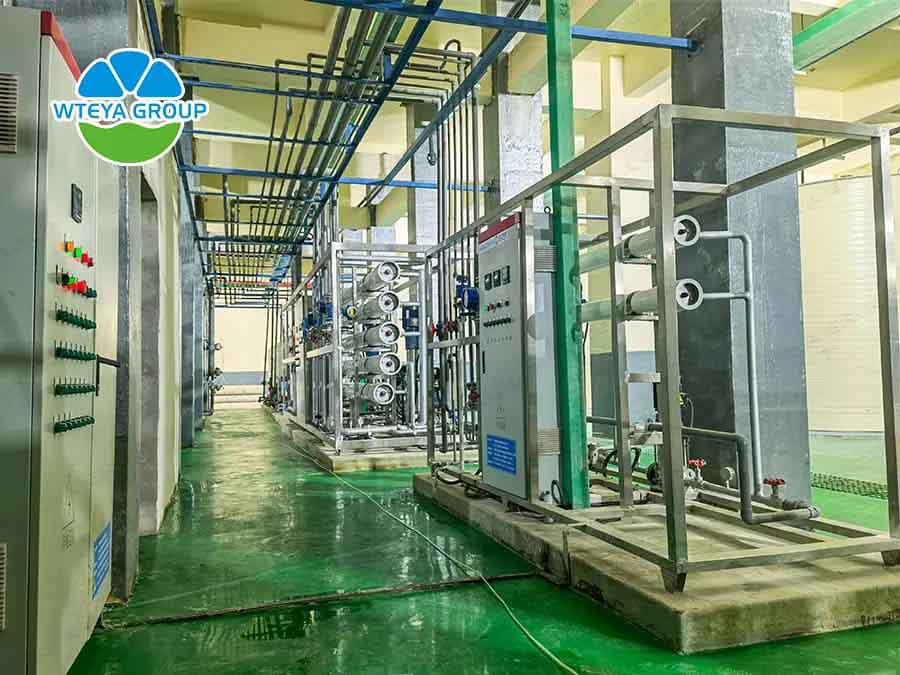What are the water treatment plants in electronic semiconductors?
Why does the electronic semiconductor industry need water treatment plant?
The production process of electronic semiconductor products has high requirements for water quality. The manufacture of semiconductor materials involves precise chemical reactions and physical processes. Impurities, ions, microorganisms, etc. in the water may cause pollution to the products and affect the performance, stability and reliability of the products. Therefore, water treatment equipment is needed to remove various impurities in the water to ensure the purity of production water.
For example, in the electronic semiconductor industry, WTEYA ultrapure water equipment effectively removes various impurities, ions and microorganisms in the water through a series of high-precision and high-tech treatment processes such as preliminary adsorption filtration, reverse osmosis purification and resin ion exchange, ensuring the production of ultrapure water with extremely high resistivity. This ultrapure water is widely used in key process links such as cleaning, etching, film making and doping in semiconductor manufacturing, and is a key factor in ensuring the performance and quality of semiconductor products.
What water treatment plant is used in the electronic semiconductor industry?
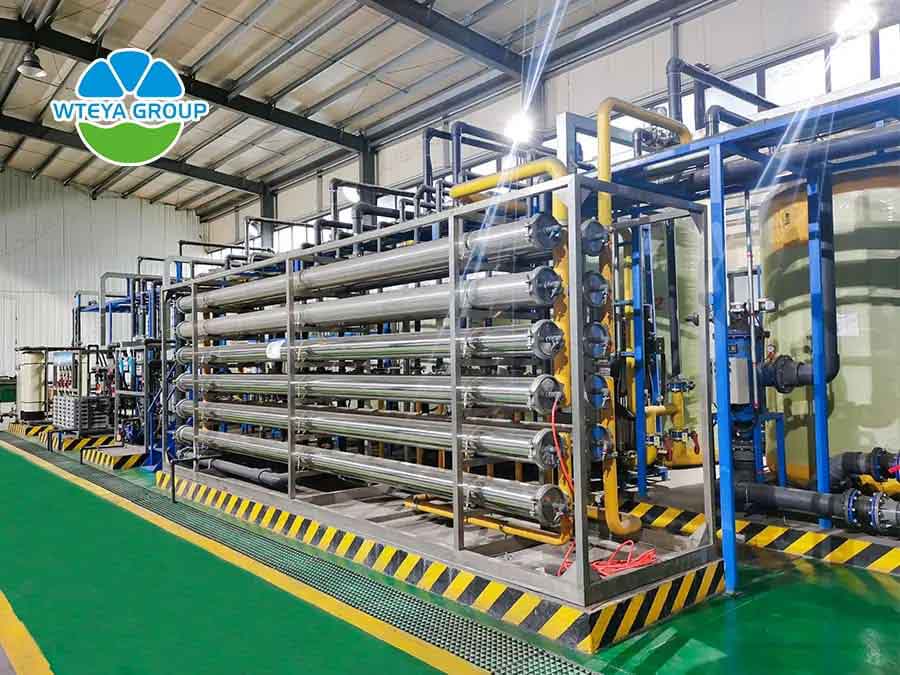
1. Multi-media/activated carbon filtration system:
Multi-media filters are usually used as the initial stage of water treatment. Through the combination of different media, they can effectively remove impurities such as suspended matter, colloids, and particles in the water, providing a relatively clean water source for subsequent treatment processes.
Activated carbon filters are mainly used to remove organic matter, odor, pigments and other impurities in water. Activated carbon has a strong adsorption capacity and can adsorb and remove these pollutants in the water, thereby further improving the purity of the water quality.
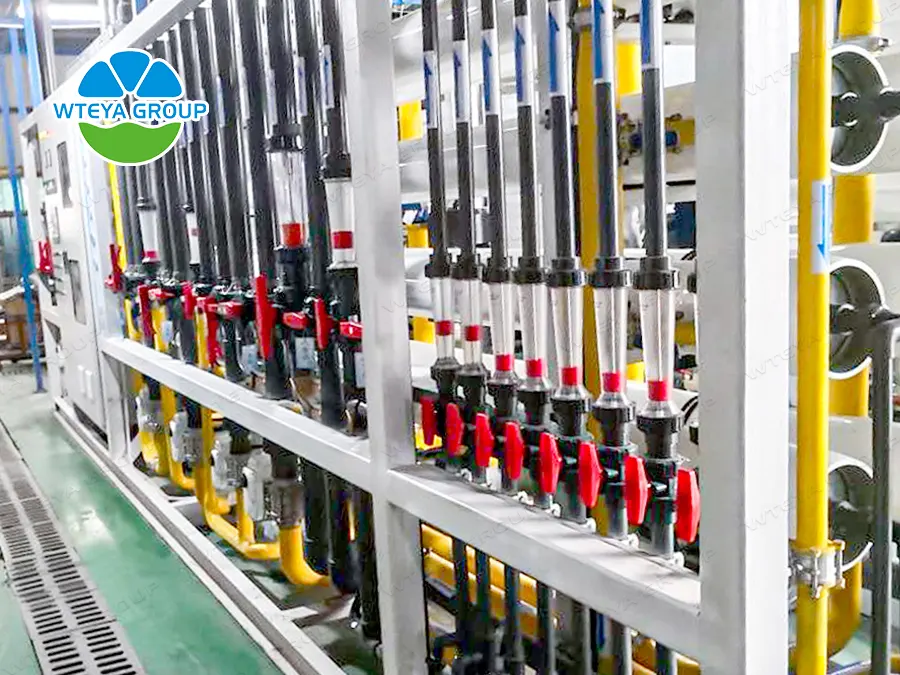
2. Ultrafiltration system:
First, in the cleaning process, the ultrafiltration membrane can effectively remove particles and ions in the water as a pretreatment process for high-quality ultrapure water systems. This ultrapure water is used to clean semiconductor devices and equipment to ensure the cleanliness of the product surface and avoid the impact of pollutants on product performance and reliability.
Secondly, ultrafiltration technology is also commonly used in the preparation of process liquids. In the semiconductor manufacturing process, various process liquids are required, such as acids, alkalis, organic solvents, etc. WTEYA ultrafiltration membranes can filter and purify these liquids, remove impurities and particles, and ensure that the purity and quality of the liquids meet production requirements.
In addition, ultrafiltration technology also plays an important role in the cooling water circulation of the equipment. Semiconductor manufacturing equipment generates a lot of heat during operation, and cooling water is required for heat dissipation. Ultrafiltration membranes can remove particles and ions in cooling water, prevent impurities from damaging the equipment, and ensure the normal operation of the equipment and the stability of the product.
3. Reverse osmosis membrane system:
Reverse osmosis membranes are mainly used in the process steps of ultrapure water preparation in the semiconductor industry. In the process of electronic semiconductor manufacturing, ultrapure water is widely used to clean key components such as silicon wafers and chips, which can effectively remove surface particles and organic matter and reduce product defect rates. Reverse osmosis membranes can provide stable, low-tension deionized water to meet the high requirements of the semiconductor industry for water quality.
In addition, reverse osmosis membrane technology can also provide high-quality cleaning water to ensure the reliability and stability of components. By utilizing the characteristics of reverse osmosis membranes, precise control of water quality can be achieved to meet the strict requirements for ultrapure water in the process of electronic semiconductor manufacturing.
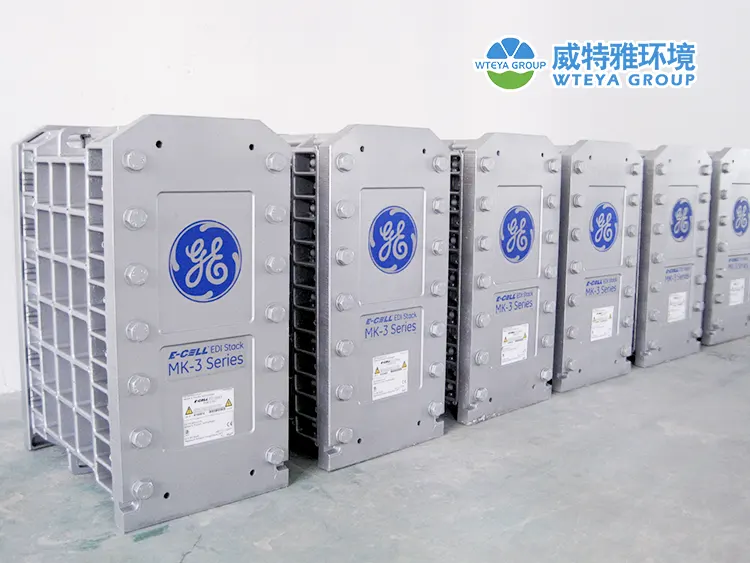
4. EDI system:
EDI system, that is, electrodeionization system, is widely used in the semiconductor industry. It is mainly used in the process steps of ultrapure water preparation.
In the semiconductor manufacturing process, ultrapure water is used in multiple key process steps, such as cleaning key components such as silicon wafers and chips, and as the basis for the preparation of other process liquids. The EDI system can effectively remove ions and other impurities in water through ion exchange membrane technology and ion electromigration technology, thereby preparing high-purity ultrapure water.
Specifically, the EDI system can remove ions in water, such as metal ions such as sodium, calcium, and magnesium, and anions such as chlorine and sulfate, so that the conductivity of water is extremely low, meeting the high requirements for water quality in the semiconductor manufacturing process. At the same time, due to its efficient ion removal ability, the EDI system can also reduce the regeneration frequency and chemical consumption required in the traditional ion exchange process, reducing operating costs and environmental impact.
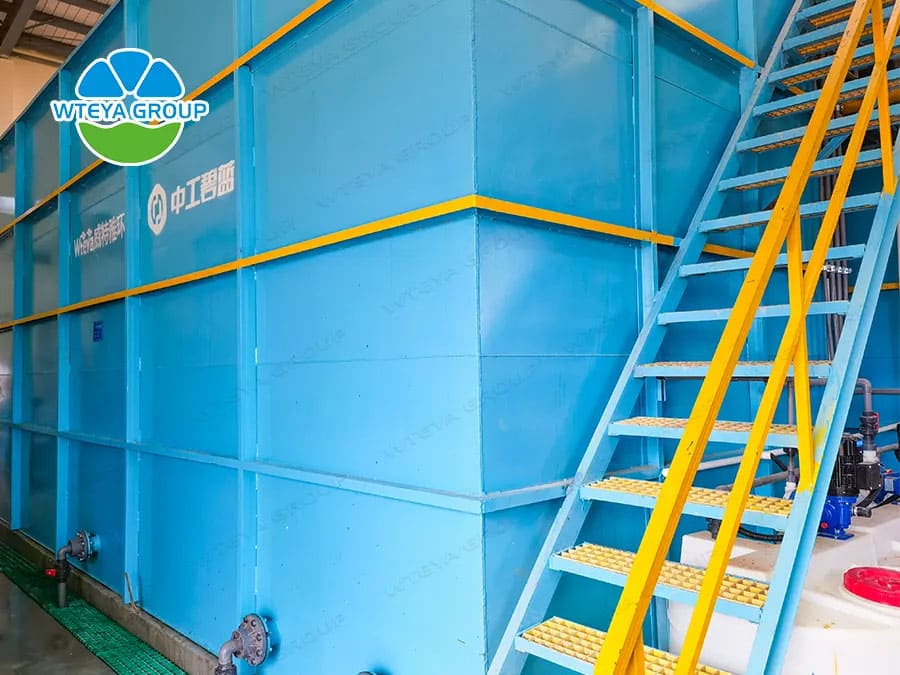
5. Polishing mixed bed system:
Polishing mixed beds are mainly used in the semiconductor industry for the preparation process of ultrapure water.
Chip washing: In the process of manufacturing chips, chemical/physical precipitation, corrosion, baking and other processes will be carried out, which will produce various impurities. In order to remove these impurities and ensure chip performance, ultrapure water is required for washing.
Preparation of semiconductor materials: Ultrapure water can remove impurities on the surface of semiconductor materials and ensure the purity requirements of semiconductor materials, thereby effectively improving the performance and reliability of semiconductor chips.
In these process steps, ultrapure water is used to clean semiconductor devices and equipment to ensure the cleanliness of the product surface and avoid the impact of pollutants on product performance and reliability. The polishing mixed bed system can effectively remove ions and organic matter in the water to ensure that the water quality meets the high standards of the semiconductor industry.
WTEYA is a one-stop turnkey service provider for electronic semiconductor water treatment solutions. In view of the water quality characteristics of the electronic semiconductor industry, the water treatment system achieves efficient treatment and reuse of water resources through a combination of filtration system + advanced special membrane separation system + EDI system + polishing mixed bed system, helping enterprises improve the economic benefits of resource recycling.








